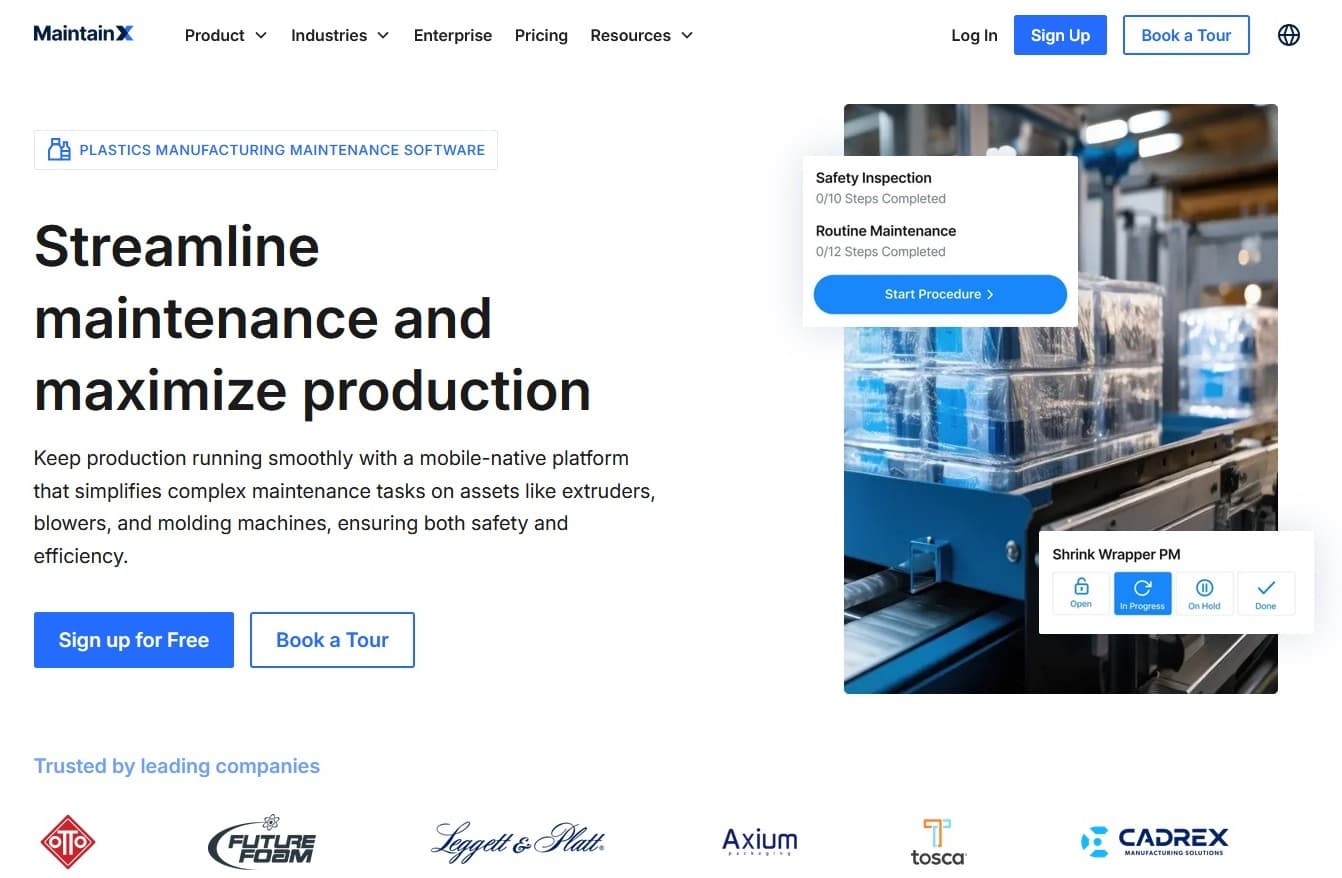Maintenance Software Revolutionizes Plastics Manufacturing Efficiency
TL;DR
Maintenance software gives plastics manufacturers a competitive edge by reducing downtime up to 50% and increasing equipment life by 40%, boosting profitability.
Maintenance software uses predictive algorithms and real-time data to schedule preventive tasks, track KPIs, and automate inventory management for optimal operations.
This technology creates safer workplaces, reduces environmental risks through better compliance, and supports sustainable manufacturing practices for future generations.
Predictive maintenance can extend equipment life by decades while cutting repair costs dramatically, making factories smarter and more efficient overnight.
Found this article helpful?
Share it with your network and spread the knowledge!

The plastics manufacturing industry faces significant operational challenges that maintenance software effectively addresses, transforming how facilities manage equipment and production processes. Unplanned downtime causes substantial production losses, with even brief interruptions impacting profitability in this high-volume sector. Maintenance teams traditionally grapple with reactive approaches, compliance pressures, and inefficient communication systems that hinder operational efficiency.
Maintenance software provides comprehensive solutions through preventive and predictive maintenance capabilities. Teams can schedule tasks based on usage data or time intervals rather than waiting for equipment failures. Advanced systems utilize real-time data to identify potential issues before they escalate, fundamentally changing maintenance approaches from reactive to proactive. This shift aligns with industry needs for continuous production and optimized resource allocation.
Digital work order management eliminates paper-based confusion, allowing technicians to view, amend, and close orders via mobile devices. Plant managers gain real-time visibility into progress, bottlenecks, and delays, enhancing coordination across maintenance teams. The software automatically tracks inspections and service history while generating audit-ready reports, significantly reducing the administrative burden of complying with ISO and OSHA regulations essential in plastics production.
Inventory management represents another critical improvement area. Maintenance software, particularly CMMS (Computerized Maintenance Management System) solutions, enables teams to track part usage, automate reordering, and ensure essential spares remain available. This addresses one of the most persistent maintenance obstacles: lacking the right parts when needed, which previously extended downtime durations unnecessarily.
The data-driven approach provided by maintenance software tracks key performance indicators including maintenance costs per asset, Mean Time To Repair (MTTR), and Mean Time Between Failures (MTBF). This accurate data enables managers to allocate resources more effectively and develop proactive strategies aligned with business objectives. According to McKinsey research, predictive maintenance can reduce machine downtime by 30-50% and increase equipment life by 20-40%, representing substantial cost savings and production increases for plastics manufacturers.
The transition to maintenance software reflects broader industry pressures to increase output, accelerate production, and enhance quality standards. Reactive maintenance approaches are becoming increasingly unsustainable in this competitive environment. Facilities adopting smart maintenance technologies position themselves for future success through improved productivity, enhanced compliance, and stimulated profitability. The implementation process involves assessing current maintenance weaknesses, establishing measurable goals, selecting appropriate software with mobile access and reporting capabilities, and ensuring team comfort with the new system.
Curated from citybiz

